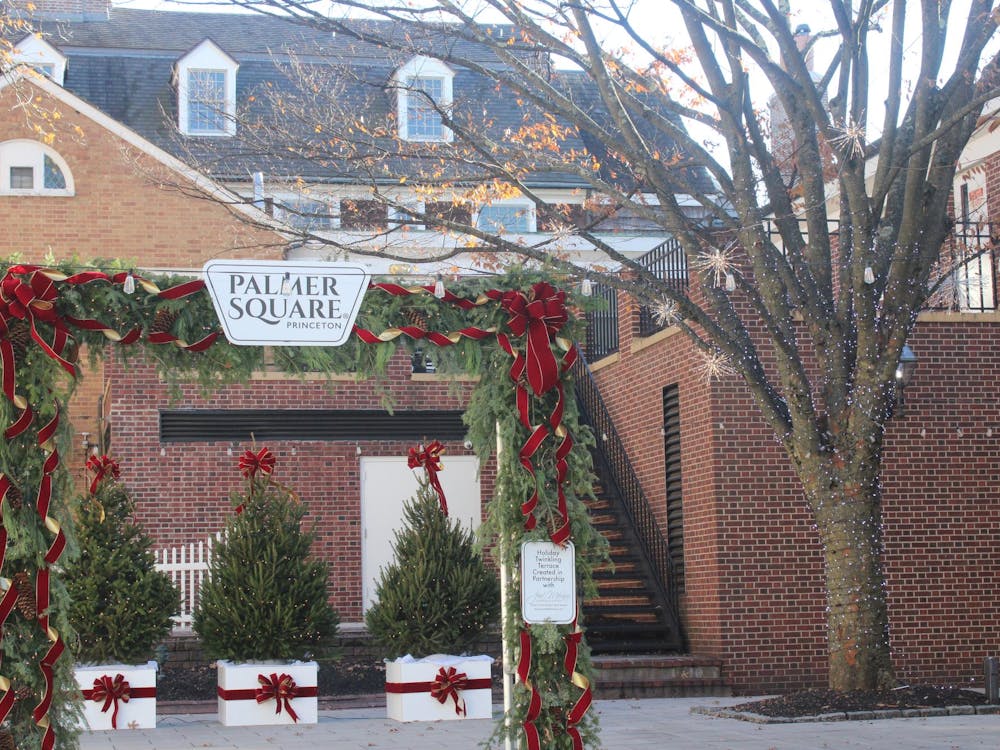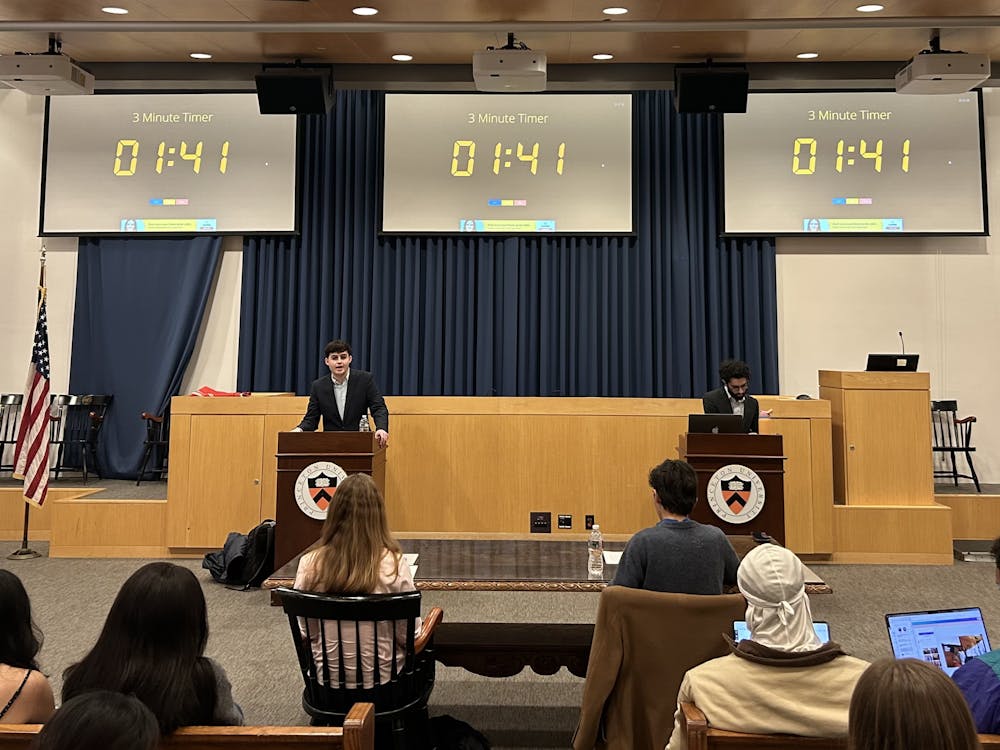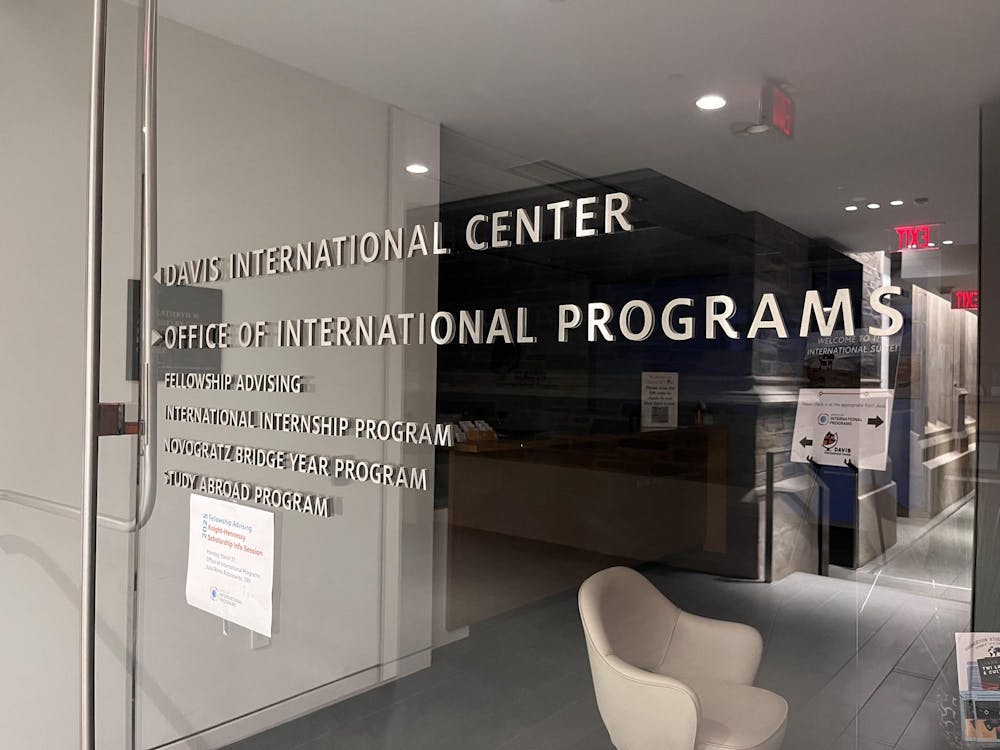On the wall of the reception room in Firestone Library's Department of Rare Books and Special Collections (RBSC) hangs an unassuming white frame. The structure contains a display of 18 coins dating to the 11th century Byzantine Empire.
No one is sure why the Byzantines chose to use cup-shaped coins for the 300 years the empire occupied Eastern Europe. But scholars of numismatics — the study and collection of coins, paper money and other currencies — are the ones to turn to for possible theories and explanations.
Alan Stahl is the University's Curator of Numismatics whose job is to archive, research and showcase the library's remarkable collection of coins. Princeton, along with Harvard and Yale, are the top universities who hold numismatics collections, though none of them are "world class," Stahl said.
"Our collection is probably the most comprehensive for [an American] university to hold," Stahl said.
"Harvard has Greek and Roman coins but not many others; Yale's is more comprehensive [than Harvard's] but not as much as ours." Princeton is also the only school to have had a curator continuously since the 1930s.
The vast unknown
Stahl said there is no way of knowing exactly how much the entire collection is worth. Since the entire library is self-insured by the University, no one has looked into the value of the coins for insurance purposes.
"We have no idea how many coins we have," Stahl said, adding that the number is probably between 60,000 and 70,000. Most of the collection consists of ancient, classical, medieval and the recently acquired Chinese coins, but there are also sizeable collections of paper money, modern coins and assortments of medals.
The RBSC employs 12 students who each work to catalogue the coins. In the office where Stahl works, named the "Coin Room," they photograph, label and research the coins, loading the profiles into an online database.
About 90 percent of the University's collection of coins has come from private donations, particularly from the private collections of alumni, Stahl said. "There's also a budget for acquisition that's sizable by numismatic collection standards."
Rather than gift their coin donations to the numismatics collection, Stahl said some alumni choose to give their coin collections directly to the Princeton Art Museum. With the exception of a Han dynasty money-tree, none are on display at the moment.
Eventually, Stahl said, the coins could be housed with the Firestone collection, though they would still technically be the property of the museum.
The University recently received a donation of more than 2,000 ancient Chinese coins from Lawren Wu '92 and his mother Tung Ching Wu, in memory of Lawren's father, Souheng Wu. Included in this donation were several non-circular coins, such as key-, knife- and spade-shaped coins.

The age of the coins is unclear since there is no good way of determining how old the metal composition of the coins is, Stahl said. Though scholars can date these coins from around 1000 to 500 B.C., the only feasible way to pinpoint their chronological origins is to test the organic material from the tombs from which the coins were excavated.
"The coins are not just for collecting; they are repositories of historical information," history and East Asian studies professor Susan Naquin said in a University press release last month. The metals can hold clues to the social, political and economic circumstances at the time.
Stahl added that he is collaborating with the East Asian studies department to find students who are interested in analyzing the Chinese coins, since he cannot read the reference texts or the coins themselves. "It would be a great JP," he said, adding that he would like some of the coins to be exhibited where the Byzantine coins are currently displayed.
The man behind the coins
Stahl is a historian by academic training, though he didn't become interested in numismatics until he wrote the dissertation for his Ph.D in medieval history from the University of Pennsylvania.
"There were a lot of documents and coins related to that time period," he said of his research. Stahl ended up studying the coins and eventually became a curator of medieval coins for the American Numismatics Society in New York. In 2004, he took the job at Firestone.
"I'm not a collector," he said. "I've never owned a coin [of historical significance] in my life." His current academic interests involve medieval Venice and Venetian coins; he has published over half a dozen books and 80 articles.
Stahl teaches a graduate seminar on numismatics in the classics department, and he said the attraction to the subject is the tangible history that the coins can bring.
One of his students commutes three hours each way from Fordham University; another comes from Rutgers University. Neither of those schools have sizeable numismatics collections of their own.
In addition to Stahl's constant watch, University classes and professors of medieval and ancient history often visit the collection, Stahl said.
Outside scholars and collectors sometimes request to see the coins as well, though these showings are generally not as frequent.
"I don't usually show people the vaults," Stahl said. Starting this November, however, many coins will be open for public viewing in the main exhibit hall of Firestone.
The small room where the collection is currently held lies behind a locked fence. Stahl said he is transferring the coins to chemically neutral plastic cases and acquiring new cabinets to house them.
But the security precautions and the old age of the coins don't stop Stahl from displaying them for visitors.
"When I pass around the tray of coins, people get so excited because they're actually handling in their hands something that people in the time period we're studying actually held as well."
Stahl said that while some collectors insist on taking precautions when handling the ancient coins, he doesn't insist on such strict protective actions.
"Some people make a fuss about handling coins, but I just pick them up with my hands," Stahl said, lifting a coin from the time of the Roman emperor Nero. "I mean, this coin has been buried in the soil for over 2,000 years. There's really not much that I could do to damage it."







